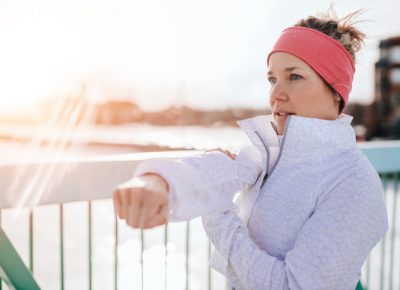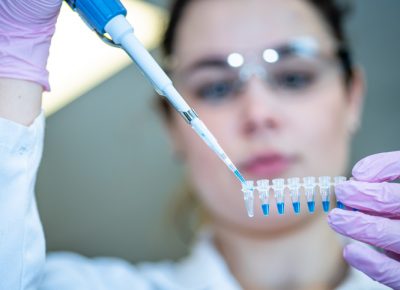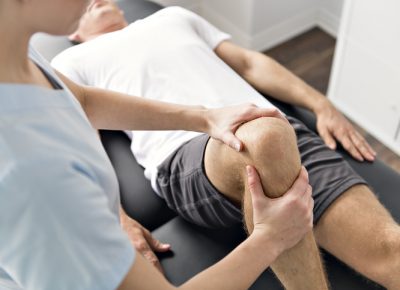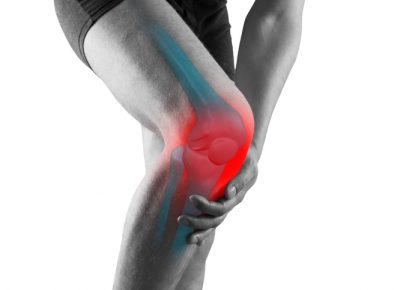Author Archives: Dr. Brian Sokalsky
Winter Workout Safety Tips

Are you practicing winter workout safety? As the temperature dips and winter approaches, it is not unusual for you to shift your workout to more indoor activities, especially at gyms and fitness centers. However, with the specter of COVID all around us, you may decide to continue exercising outside for health safety reasons. Outdoor workouts can continue this winter if you are aware of the unique risks brought about in colder months as opposed to those in the summer months.
5 Outdoor Winter Workout Health and Safety Tips
Layer Up
While it is a natural instinct to bundle up against the cold, it is important to remember that our bodies produce a lot of heat that needs to be dissipated while exercising. Be sure to wear multiple thin layers that can be easily removed during a workout to help release the built-up heat. Layers close to the skin should be made of synthetic fibers that can wick away moisture and keep the skin dry. Outer layers should help protect against the elements such as wind, rain and snow. Additionally, with shorter days, the outer layers should be lighter in color or include reflective materials for working out in the dark.
Protect Your Extremities
In cold weather, the body shunts more blood flow to the core of the body to help maintain proper body temperature. This leaves the outermost parts your body, fingers, toes and ears, more vulnerable to the cold and possible frostbite. Be sure to include additional protection such as hats or headbands for your ears and gloves your hands. Specialized winter footwear may be necessary to protect your feet as typical running shoes are designed to release heat while running. An additional option may be to buy your sneakers a half size bigger to allow space for thicker socks. Finally, the same rules apply for covering your hands and feet as with the rest of your body. Stick to synthetic fibers close to the skin with thicker fibers covering those.
Warm Up
All your workouts require a proper warmup. Increasing the blood flow to muscles and tendons increases the temperature and pliability of the tissues, decreasing the risk of injury. However, in the cold of winter, it can take longer to achieve the increase in blood flow and tissue temperature.
And be sure to make the warmup a dynamic one. The old form of static stretching, like bending over to touch your toes, does not provide the necessary effect to decrease injury risk. Instead, movements such as body weight squats and lunges can get the muscles ready for a winter workout involving running or cycling.
Hydrate
Many people forget about the importance of hydration in cold weather because they do not feel the added stress of excess heat and perspiration like in the heat of the summer months.
However, there are several factors in cold air that increase the demands on fluid maintenance in the body. Warming the cold, dry air as we breath it in and more rapid evaporation of sweat in the cold are just a couple causes of significant water loss during a winter workout. Make sure to maintain regular fluid intake throughout your workout to prevent dehydration. For workouts under an hour, water is sufficient. But longer workouts should include some type of sports drink or electrolyte replacement.
Keep Moving
Outdoor workouts are likely to be more popular than usual with the reality of COVID this winter. While the cold can be uncomfortable for many of us, the important thing is to keep some form of exercise routine. Moving our workouts outside can be performed safely by following the few, simple tips above.
Want to get better results from your exercise routine? Suffer from a chronic sports injury? Contact Us for a comprehensive Sports Medicine Consultation.
Stem Cell Treatment for Knee Pain

Have you heard about stem cell treatment for knee pain? Osteoarthritis (OA) is the number one joint disorder in the United States. It is defined as the loss of articular cartilage that lines the end of bones. According to the CDC, over 32.5 million adults suffer from knee osteoarthritis, including over 10% of males and 13% of females over the age of 60. As our population continues to age and live longer, those numbers will only continue to grow.
Knee Osteoarthritis Treatment
Typical symptoms of knee OA include pain, stiffness, swelling and loss of motion. The symptoms can cause limitations in activity that can significantly affect your ability to function and your quality of life.
When you suffer from knee OA, your body is unable to grow new articular cartilage. Treatments primarily focus on controlling the symptoms of OA. Initially, you might treat the symptoms with over-the-counter medications such as ibuprofen or acetaminophen. As symptoms worsen, prescription medications and treatments such as physical therapy can be added. More severe pain can be treated with injections, including corticosteroids or viscosupplements such as Orthovisc. When those treatments stop working, your only option left is to have the knee replaced.
Stem Cell Treatment for Knee Pain
Recent advances in research have provided an alternative treatment that can often postpone the need for surgery. Stem cells provide hope for treatment for a number of severe, degenerative conditions, especially knee OA. Stem cells are cells in the body that are able to regenerate themselves through cell division. They serve as a repair system for the body.
Early stem cells were harvested from donated embryos that were not used during in vitro fertilization. There was a lot of debate regarding the ethical use of these embryos. Recently, much of the research has shifted to focusing on adult stem cells, where there is no ethical debate.
Injecting adult stem cells into the area of injury allows for healing of the damaged tissue. The property of differentiation provides stem cells the ability to heal tissues that the body otherwise is unable to regenerate due to poor blood supply. The injected stem cells help attract the body’s own stem cells to contribute to the healing process. In addition, stem cells have a broad spectrum of growth factors the help block inflammation, adding to the treatment’s success.
Early research has shown promising results with stem cell treatment for knee pain in improving patient’s pain and function following treatment. However, more research is needed to learn exactly how the stem cells work and if we are able to fully regrow the cartilage lost with knee OA.
Click HERE to learn more about the services offered for knee pain treatment at Jersey Shore Sports Medicine. To schedule a consultation with Dr. Sokalsky, please call us at 609-904-2565 or click HERE.
Why Should I See a Sports Medicine Physician?

When you hear the term sports medicine, it commonly conjures an image of an elite athlete having their ACL reconstructed by an orthopedic surgeon, or a severe fracture fixed surgically with plates and screws. However, most injuries to the muscles and joints of our body do not require surgery.
Fortunately, there is an entire specialty dedicated to nonsurgical treatments for these types of injuries – Primary Care Sports Medicine. Primary Care Sports Medicine or Sports Medicine specialists undergo primary residency training in a field of general medicine, such as Family Medicine, and then additional fellowship training in sports medicine.
A sports medicine physician has the additional training to treat most injuries to athletes, as well as weekend warriors and even patients who lead more sedentary lifestyles. Sports medicine physicians can diagnose and direct the treatment of sprains and strains to muscles, ligaments and tendons. They can also treat chronic conditions such as joint arthritis.
Non-surgical treatments that can be provided by sports medicine physicians include cortisone injections, viscosupplement injections, manipulative therapy and medications. They can also prescribe additional treatments such as physical therapy. Many nonsurgical sports medicine physicians additionally offer regenerative treatments such as platelet rich plasma injection and stem cell therapy.
With a background in general medicine, nonsurgical sports medicine physicians are also able to address non-orthopedic injuries like concussions. They are also able to help recognize the signs of underlying medical conditions that can cause pain or otherwise affect activity performance. For example, young, female athletes, particularly those in sports like figure skating and gymnastics, can be at risk of stress fractures due to physiologic changes from poor nutrition. Another example is athletes competing in cold weather can have asthma-like symptoms such as coughing and shortness of breath while training without having true asthma. These are conditions that if recognized and treated early can significantly improve performance and keep athletes on the field by avoiding injury.
Nonsurgical sports medicine doctors treat most “orthopedic” injuries without the need for surgery. In addition, they can help monitor the overall health of athletes, identifying potential medical problems that could be lurking under the surface.
And, remember sports medicine physicians are well suited to provide comprehensive medical care for the “non-athlete” as well, and are excellent resources for the individual who wishes to become active or begin an exercise program. For the “weekend warrior” who experiences an injury, the same expertise used for the competitive athlete can be applied to return the individual as quickly as possible to full function.
Common examples of treatment provided by nonsurgical sports medicine physicians include:
- Acute injury treatment (sprains, strains, knee & shoulder injuries and fractures)
- Overuse injury treatment (rotator cuff, tendonitis, osteoarthritis)
- Concussion (mild traumatic brain injury)
- Athletes with chronic or acute illness (such as asthma)
- Nutrition and performance issues
- Exercise prescription for patients who want to increase their fitness
- Injury prevention
- “Return to play” decisions
- Recommendations on safe strength training and conditioning exercises
- Healthy lifestyle promotion
Interested in learning more about services offered at Jersey Shore Sports Medicine? Click HERE.
To schedule a consultation with Dr. Sokalsky, please call the office at 609-904-2565 or click HERE for an appointment.
Viscosupplements Offer Non-Surgical Knee Pain Relief

Viscosupplements are a class of medications that are made up of hyaluronate, which is the building block of joint fluid and they have shown excellent results for patients with chronic knee pain. Knee osteoarthritis is a common disease faced by men and women as they grow older. It causes knee pain and swelling resulting in significant limitation in daily activity. One of the most common treatments for knee osteoarthritis is viscosupplementation injections, often referred to as gel shots, chicken shots or rooster shots.
What is Osteoarthritis?
To understand how they work; we first must understand what osteoarthritis (OA) is. OA is the breakdown of the articular cartilage that lines the ends of the thigh bone (femur) and shin bone (tibia) that make up the knee joint. The cartilage serves as a shock absorber and also produces joint fluid to help lubricate the joint. As the cartilage breaks down in OA, the joint begins to lose both the shock absorption and lubrication provided by the cartilage. This leads to increased inflammation, leading to pain, swelling and stiffness.
How do Viscosupplements work?
To combat the effects of OA, viscosupplements are often used. They are a class of medications that are made up of hyaluronate, which is the building block of joint fluid. They come in a prefilled syringe that contains a thick, gel-like fluid. When injected, the fluid gets absorbed by the remaining articular cartilage in the knee providing improved lubrication and shock absorption. In turn, there is often decreased knee pain, inflammation and swelling, as well as improved motion and function. Because the viscosupplements work with the remaining articular cartilage in the knee, they are most effective in knees with mild-to-moderate arthritis.
There are a number of different viscosupplement products on the market. Some of the most well-known brands, including Synvisc, Orthovisc and Supartz, have been around for about 20 years. Multiple newer ones have entered the market in the last few years. They can be administered in a series of weekly injections over 3-5 weeks or as a single injection. Most insurance plans cover viscosupplements, making them one of the top nonsurgical options to help delay or prevent surgery, such as knee replacement.
There is more information about viscosupplements and other nonsurgical treatment options for knee osteoarthritis on our website.
If you would like to see if you are a candidate for viscosupplement injections for knee pain relief, contact us for a consultation.
